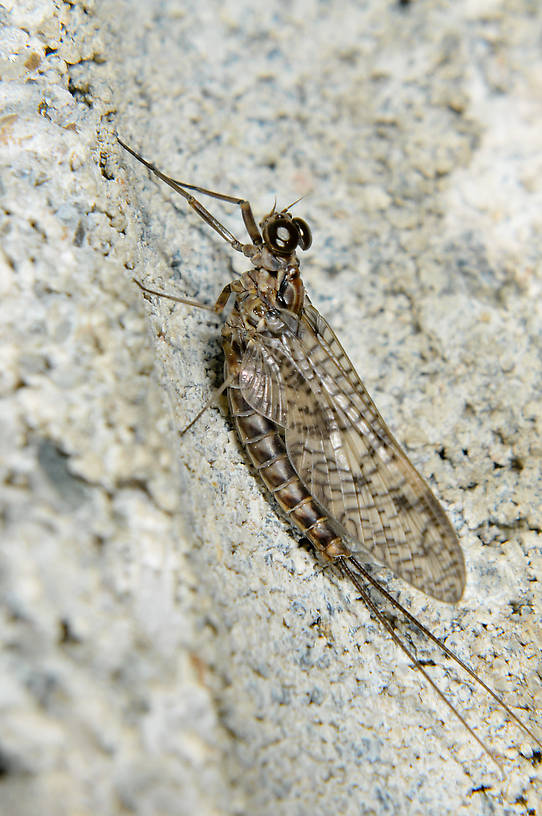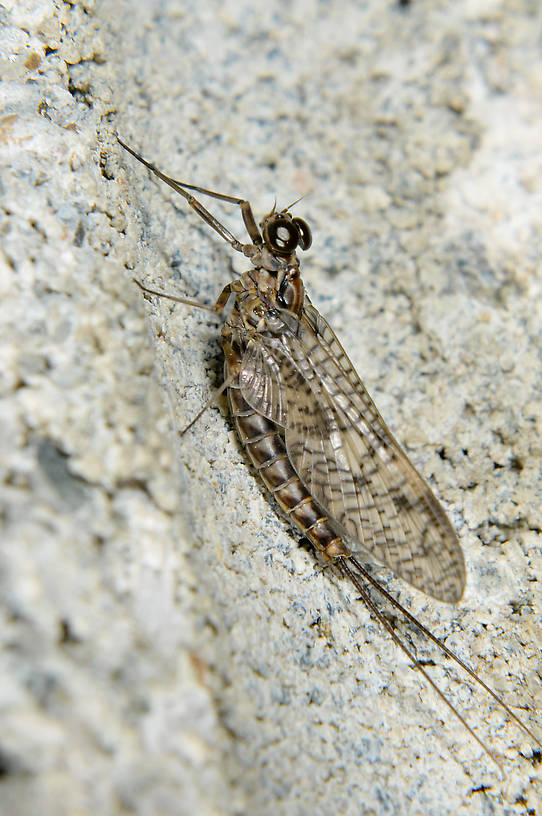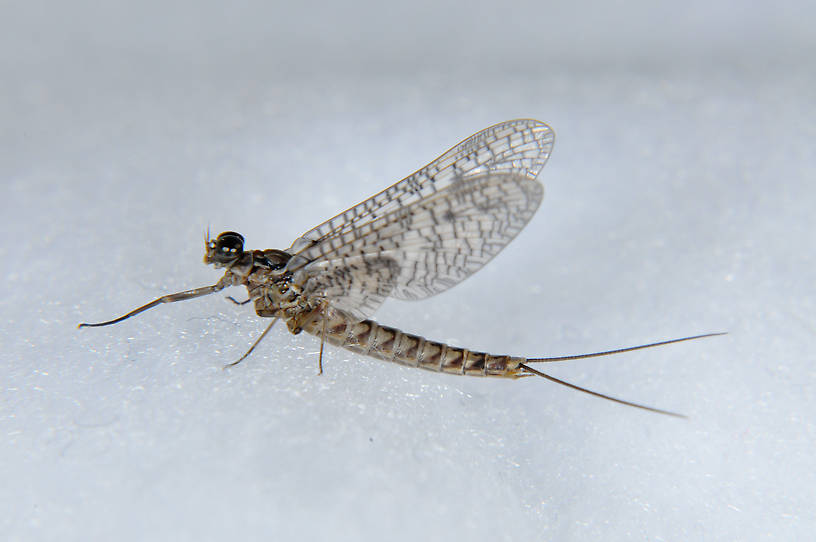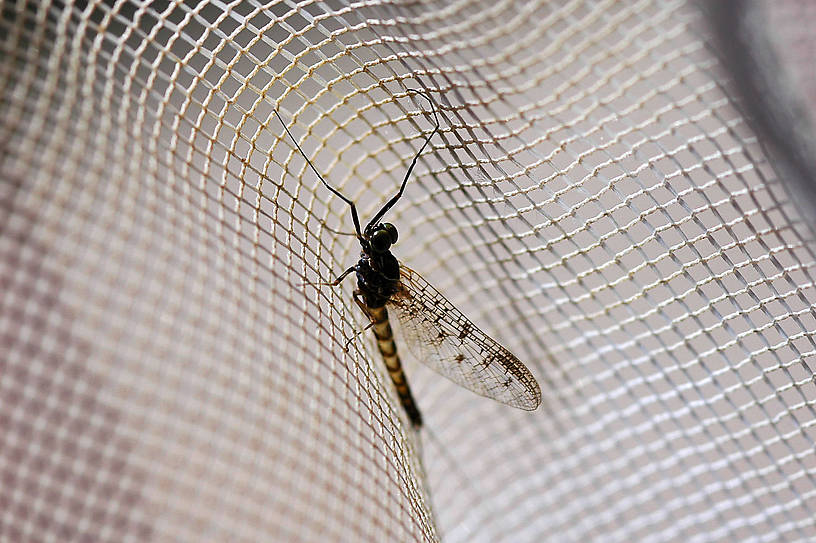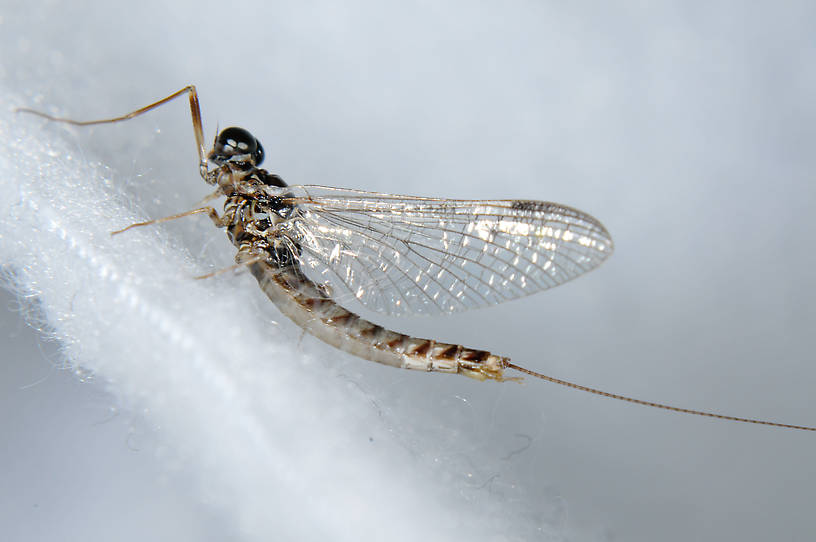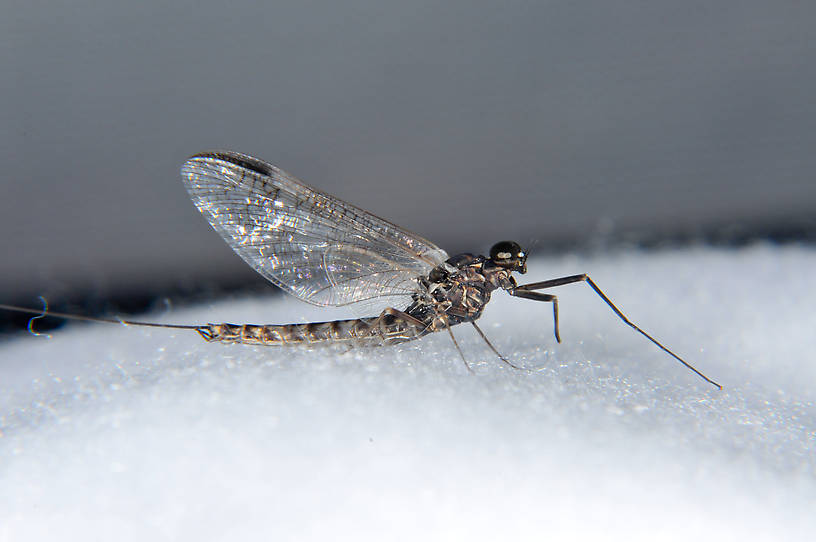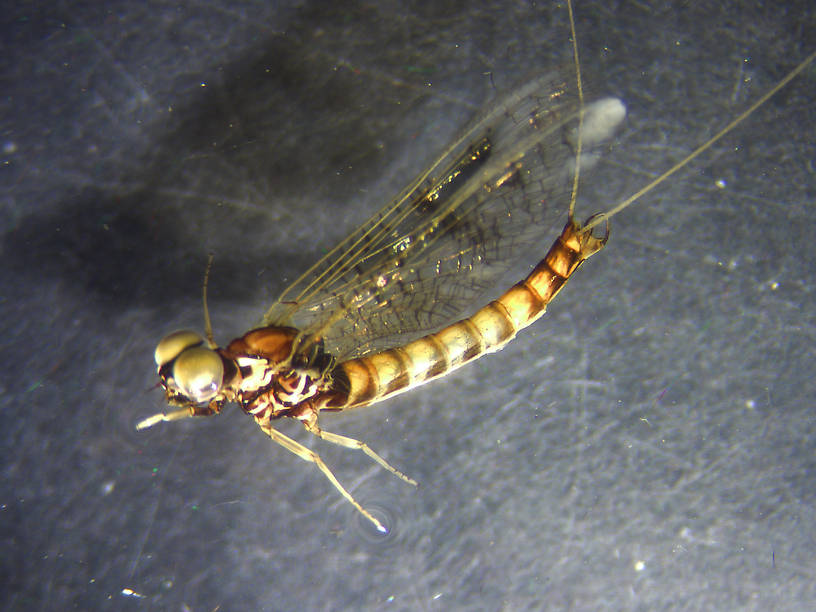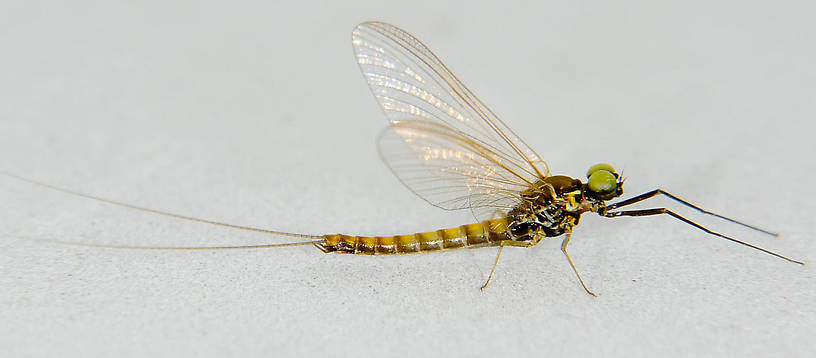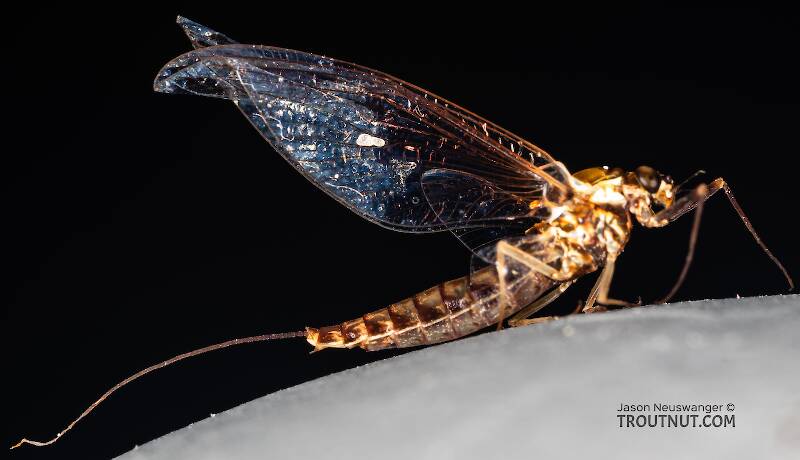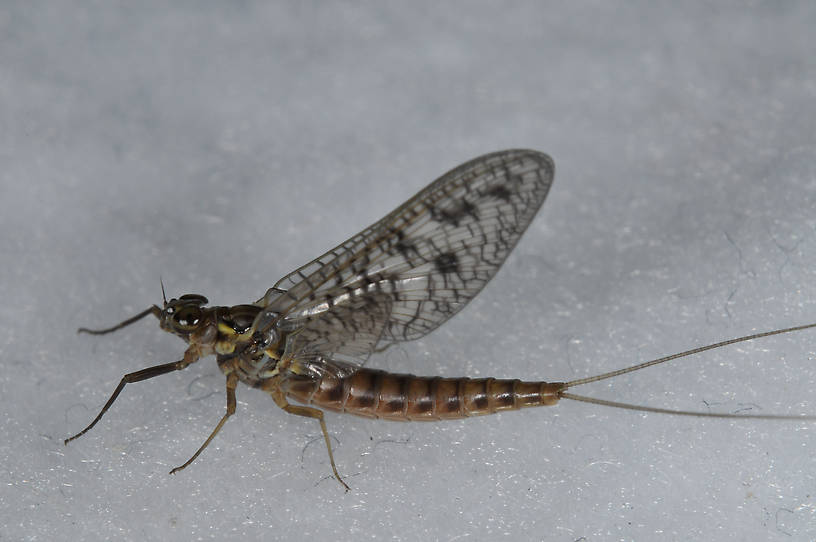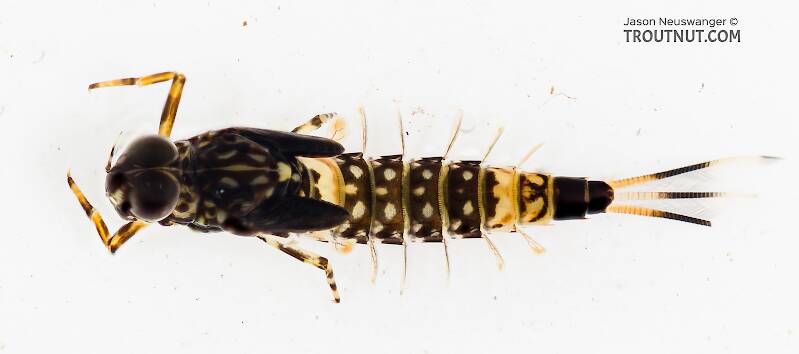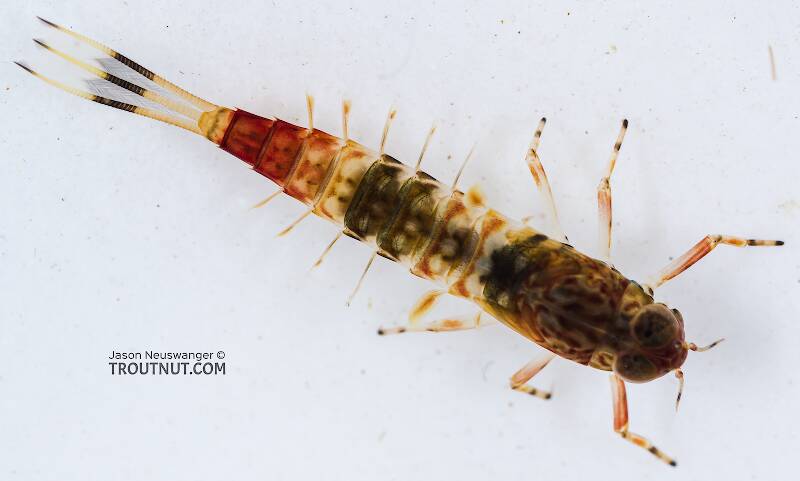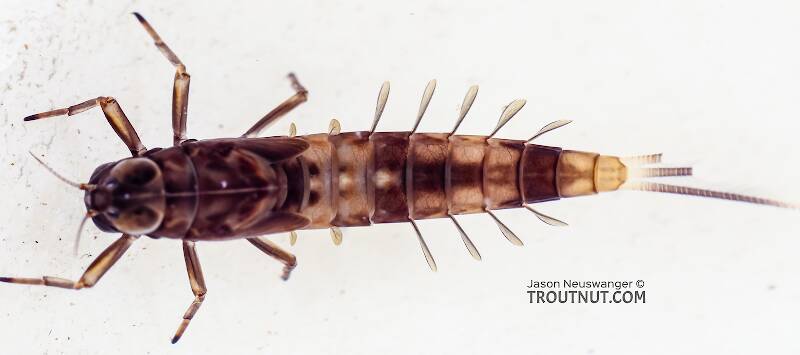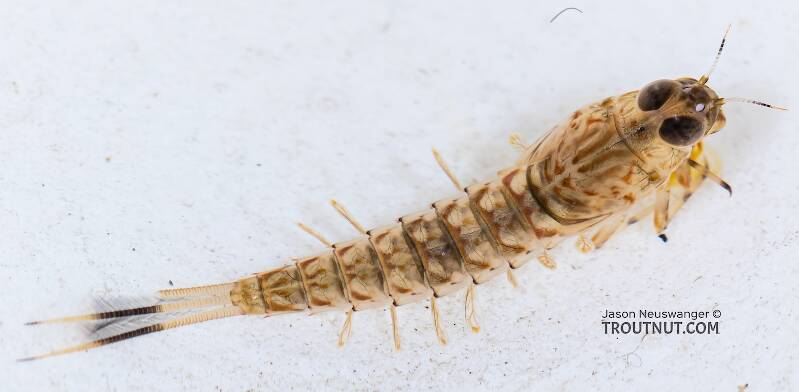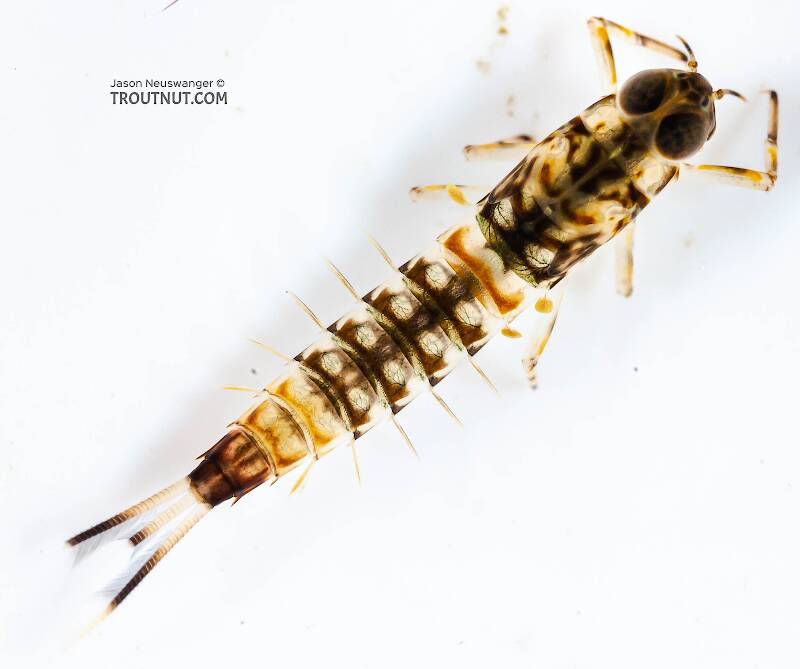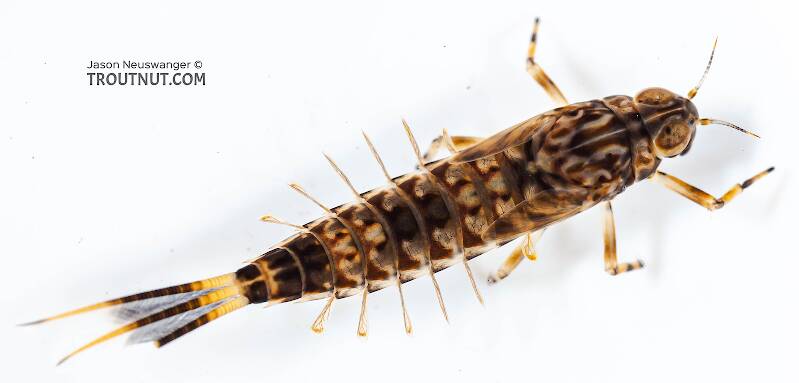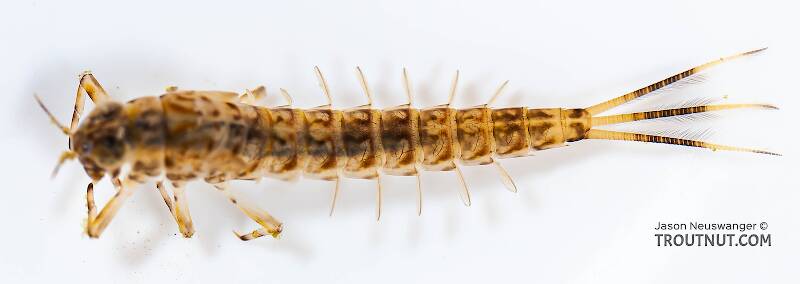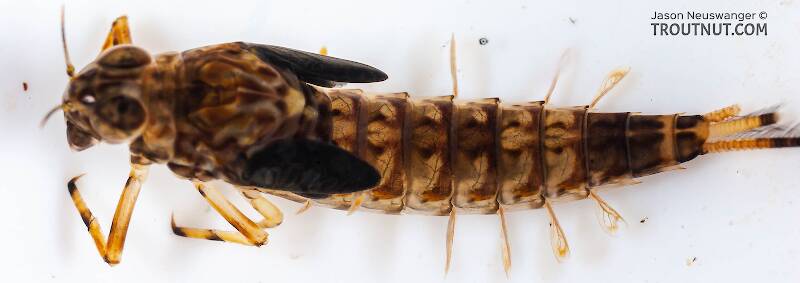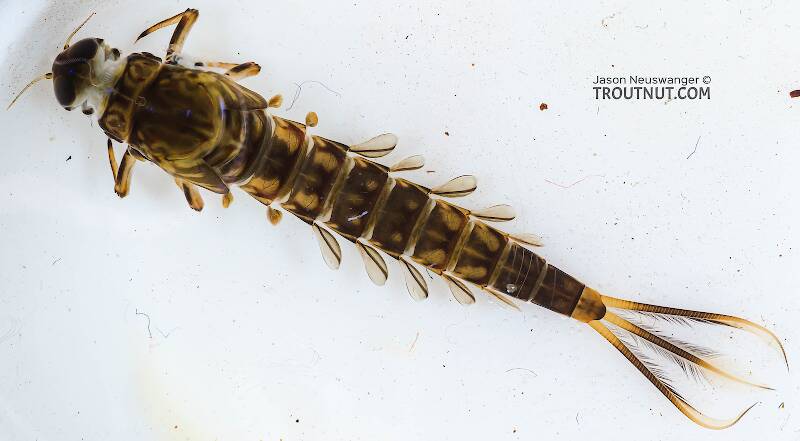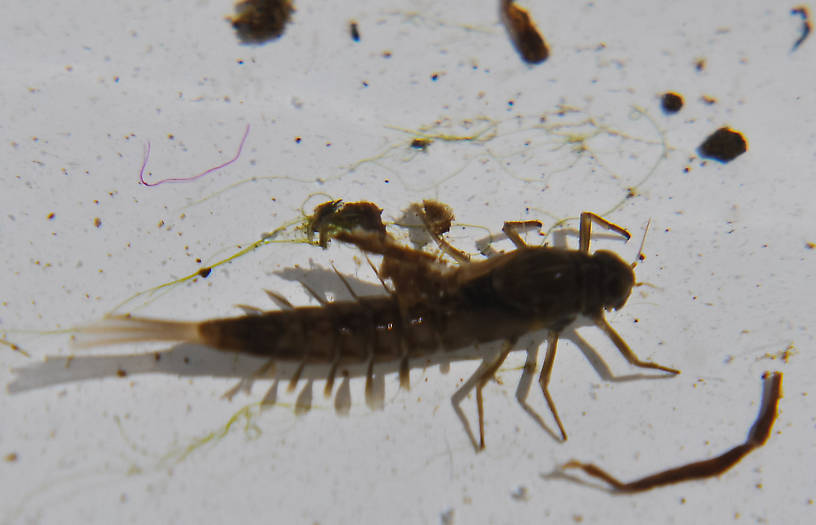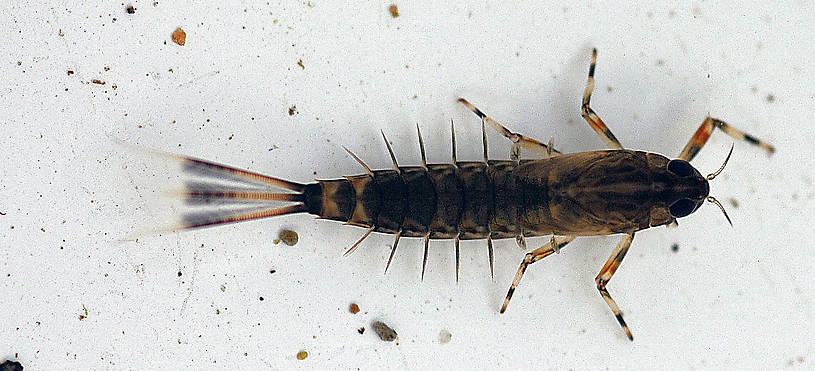
Hex Mayflies
Hexagenia limbata
The famous nocturnal Hex hatch of the Midwest (and a few other lucky locations) stirs to the surface mythically large brown trout that only touch streamers for the rest of the year.
Featured on the forum

Troutnut is a project started in 2003 by salmonid ecologist Jason "Troutnut" Neuswanger to help anglers and
fly tyers unabashedly embrace the entomological side of the sport. Learn more about Troutnut or
support the project for an enhanced experience here.
Mayfly Genus Ameletus (Brown Duns)
Where & when
Preferred waters: Streams of all sizes
Altitude: Up to 11,000 feet
In 114 records from GBIF, adults of this genus have mostly been collected during June (32%), May (22%), July (18%), April (12%), and August (8%).
In 326 records from GBIF, this genus has been collected at elevations ranging from 13 to 11037 ft, with an average (median) of 1152 ft.
Genus Range
Hatching behavior
These mayflies emerge sporadically by crawling out of the water as nymphs.Nymph biology
Ameletus nymphs are very fast swimmers. They are occasionally mistaken (especially in early instars) for some species in the Baetidae family, having roughly similar body shape and coloration. They are easily separated under close inspection based on gill coloration and prominent mouth parts. As mature nymphs their large size and intense maculation (the scientific common name for this family in some circles is Painted Minnow nymph) make them much easier to differentiate from others.Specimens of the Mayfly Genus Ameletus
3 Male Duns
5 Male Spinners
2 Female Spinners
15 Nymphs
Discussions of Ameletus
Brown Dun hatch/swarm time?
10 replies
Posted by Konchu on Apr 25, 2009 in the species Ameletus ludens
Last reply on Apr 29, 2009 by Troutnut
Has anyone else watched a Brown Dun hatch or swarm? If so, what time of day did you see it, and how long did it last?
I came upon a woodland swarm late this evening. I thought I saw mating occurring higher above the stream. This would mean that parthenogenesis is not necessarily happening in "my" stream. I watched for awhile, but got distracted (venomous snake). I hope to catch it (the hatch, not the snake) again tomorrow night and note the egg-laying behavior and possibly nab some male adults for science. There's a range of nymph ages, so I should be OK, weather permitting.
I came upon a woodland swarm late this evening. I thought I saw mating occurring higher above the stream. This would mean that parthenogenesis is not necessarily happening in "my" stream. I watched for awhile, but got distracted (venomous snake). I hope to catch it (the hatch, not the snake) again tomorrow night and note the egg-laying behavior and possibly nab some male adults for science. There's a range of nymph ages, so I should be OK, weather permitting.
Start a Discussion of Ameletus
References
- Arbona, Fred Jr. 1989. Mayflies, the Angler, and the Trout. Nick Lyons Books.
- Caucci, Al and Nastasi, Bob. 2004. Hatches II. The Lyons Press.
- Knopp, Malcolm and Robert Cormier. 1997. Mayflies: An Angler's Study of Trout Water Ephemeroptera . The Lyons Press.
Mayfly Genus Ameletus (Brown Duns)
Taxonomy
Species in Ameletus
Ameletus browni
0
0
Ameletus celer
1
2
Ameletus cookiDark Brown Duns
1
11
Ameletus dissitus
0
0
Ameletus exquisitus
0
0
Ameletus lineatus
0
0
Ameletus ludens
3
22
Ameletus oregonensis
2
4
Ameletus shepherdi
0
0
Ameletus similior
0
0
Ameletus sparsatus
0
0
Ameletus subnotatus
1
1
Ameletus suffusus
1
8
Ameletus validus
0
0
Ameletus vancouverensis
0
0
Ameletus velox
2
9
Ameletus vernalis
7
21
Ameletus walleyi
1
2
Species in Ameletus: Ameletus browni, Ameletus celer, Ameletus cooki, Ameletus dissitus, Ameletus exquisitus, Ameletus lineatus, Ameletus ludens, Ameletus oregonensis, Ameletus shepherdi, Ameletus similior, Ameletus sparsatus, Ameletus subnotatus, Ameletus suffusus, Ameletus validus, Ameletus vancouverensis, Ameletus velox, Ameletus vernalis, Ameletus walleyi
16 species (Ameletus amador, Ameletus andersoni, Ameletus bellulus, Ameletus cryptostimulus, Ameletus doddsianus, Ameletus edmundsi, Ameletus falsus, Ameletus imbellis, Ameletus inopinatus, Ameletus majusculus, Ameletus minimus, Ameletus pritchardi, Ameletus quadratus, Ameletus tarteri, Ameletus tertius, and Ameletus tolae) aren't included.



